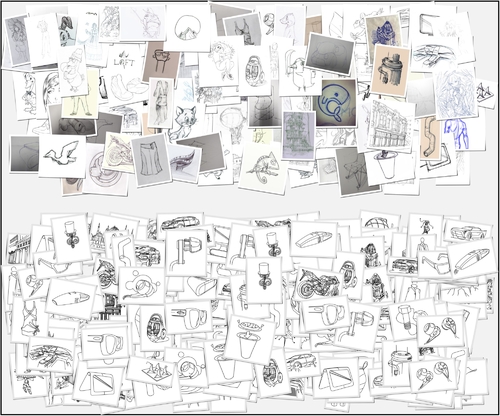Pre-recorded Sessions: From 4 December 2020 | Live Sessions: 10 – 13 December 2020
4 – 13 December 2020
Pre-recorded Sessions: From 4 December 2020 | Live Sessions: 10 – 13 December 2020
4 – 13 December 2020
#SIGGRAPHAsia | #SIGGRAPHAsia2020
#SIGGRAPHAsia | #SIGGRAPHAsia2020











Date/Time:
04 – 13 December 2020
All presentations are available in the virtual platform on-demand.
Lecturer(s):
Chuan Yan, George Mason University, United States of America
David Vanderhaeghe, Institut de Recherche en Informatique de Toulouse (IRIT), Université de Toulouse, France
Yotam Gingold, George Mason University, United States of America
Bio:
Description: Sketching is a foundational step in the design process. Decades of sketch processing research have produced algorithms for 3D shape interpretation, beautification, animation generation, colorization, etc. However, there is a mismatch between sketches created in the wild and the clean, sketch-like input required by these algorithms, preventing their adoption in practice. The recent flurry of sketch vectorization, simplification, and cleanup algorithms could be used to bridge this gap. However, they differ wildly in the assumptions they make on the input and output sketches. We present the first benchmark to evaluate and focus sketch cleanup research. Our dataset consists of 281 sketches obtained in the wild and a curated subset of 101 sketches. For this curated subset along with 40 sketches from previous work, we commissioned manual vectorizations and multiple ground truth cleaned versions by professional artists. The sketches span artistic and technical categories and were created by a variety of artists with different styles. Most sketches have Creative Commons licenses; the rest permit academic use. Our benchmark's metrics measure the similarity of automatically cleaned rough sketches to artist-created ground truth; the consistency of automatic cleanup algorithms' output when faced with different variations of the input; the ambiguity and messiness of rough sketches; and low-level properties of the output parameterized curves. Our evaluation identifies shortcomings among state-of-the-art cleanup algorithms and discusses open problems for future research.
